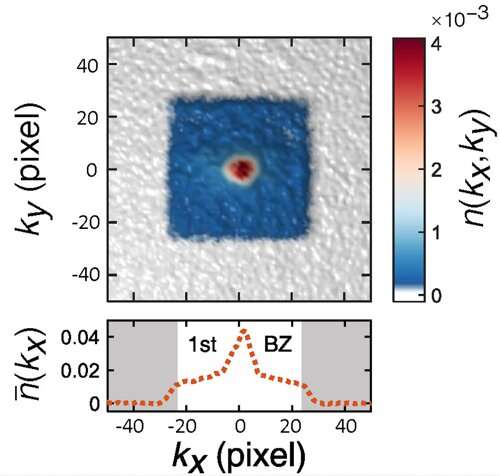This article has been reviewed according to Science X's editorial process and policies. Editors have highlighted the following attributes while ensuring the content's credibility:
fact-checked
trusted source
proofread
From transient to eternal: Probing equilibrium correlations by ramping dynamics

Prof. Jiazhong Hu at Tsinghua University and Prof. Xuzong Chen at Peking University, utilizing a new theory named non-adiabatic linear response proposed by Prof. Hui Zhai at Tsinghua University, experimentally demonstrate novel quasi-particle behaviors in different quantum phases in cold atoms trapped by optical lattices.
Quantum many-body systems display rich phenomena characterized by varieties of correlations. To investigate these many-body correlations, scientists usually apply the linear response theory to probe the charge or spin gap to label different quantum systems. Another important aspect of many-body correlations is whether a system possesses a well-defined quasi-particle description or not, which describes the excitation properties and dynamical behaviors of many-body system.
This paper proposes a new theory named non-adiabatic linear response. This new theory is based on ramping the physical parameters and observing differences of observables between the dynamical states and steady states. This theory finds that this difference is independent on the ramping trajectories, and it is proportional to the correlations of the equilibrium states at the ending point of the ramping. This provides a new method to probe many-body systems and the corresponding correlations, and this measurement is sensitive to whether a system possesses a well-defined quasi-particle description.

Besides building a new theoretical frame, this paper also utilizes the cold-atom platform to experimentally verify the new theory. By ramping the trap depth of optical lattices with different rate and observing the quasi-momentum distributions, the experiment probes the excitation spectra of superfluid-Mott insulator phase transitions.
Particularly, it utilizes a newly-developed improved-band-mapping method which provides a much better resolution of quasi-momentum distributions. Utilizing these advantages, the experiment verifies the non-adiabatic linear response theory, and shows different correlated behaviors in regimes of superfluid, Mott insulators, and quantum critical regions. It also characterizes the quasi-particle description in different quantum phases.
The findings are published in the journal Science Bulletin.
More information: Libo Liang et al, Probing quantum many-body correlations by universal ramping dynamics, Science Bulletin (2022). DOI: 10.1016/j.scib.2022.12.005
Provided by Science China Press





















